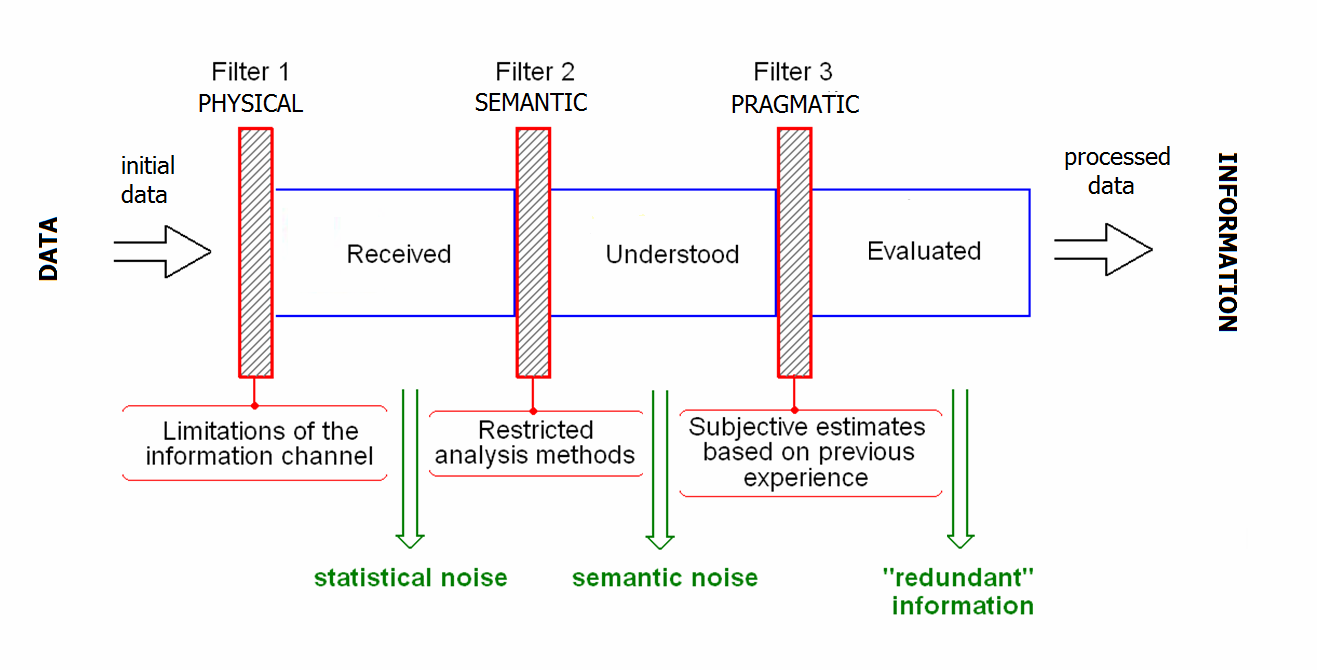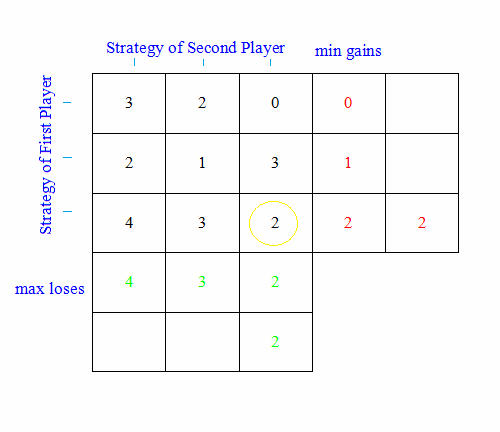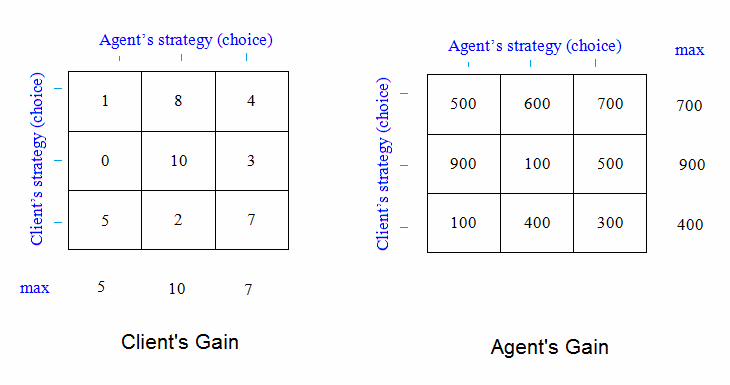New edition of the lecture textbook. Main types of models used in the decision-making theory are presented with examples from business practice. The principle attention is paid to the problem of selection of useful information in decision-making process and solving the associated inverse problems. The contents are similar to the 1999 edition.
O. Y. Uritskaya. Making Decisions under Risk and Limited Information Conditions // St. Petersburg: SPbSTU Press, 2005, 108 p.
Fig. 1. Process transformation of data to the information. Preceding throw the physical, semantic and pragmatic filters significant part of important information can be lost with statistical and semantic noise or is not recognized as useful one.
Fig. 2. Antagonistic Game. If participants have the opposite goals, they can not negotiate and they have to hide information form each other, because in this case the gaincan be increased only if the opponent makes a mistake. The solution shown is most cautious one. In literature it calls pessimistic approach. But if your opponent is your enemy you have no other choice. The classic example of this game at the practice is gaining a new part of stable market. If you get it, somebody has to loose. But in real life this happens very rare, markets are use to grow and the opponents are not your real enemy, just partners with different goals and negotiation always is good solution.
Fig. 3. Bimatrix Game. For more reasonable choice than just guessing we usually ask for help from professionals. They are people, so have their own goals and interests in the situation. Result – the goals are not opposite, but just different and model become Bimatrix game. This name is used for 2 person games, if more is consider more – it just become too complicated to demonstrate in matrix form, but approach is good for any number of participants. Here everyone is interested in max gain, but have to choose depend on moving of other participant. In this particular example they probably never choose right strategy if only will not negotiate. In this case they can share they profit or some benefits. Here we still have some option to increase the gain with new inf from our opponent. What why the always pays off.



